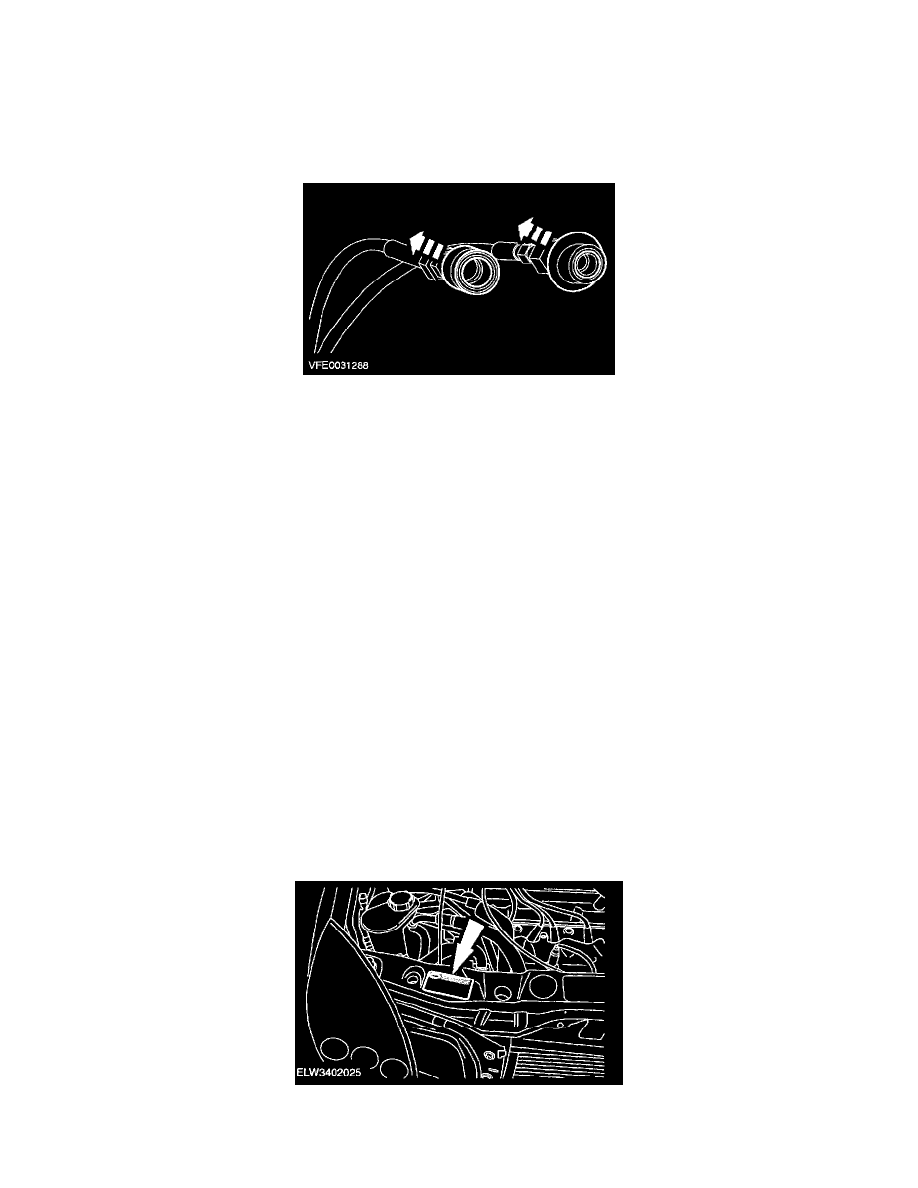Focus ZX5 L4-2.0L DOHC VIN 3 (2002)

Refrigerant: Service and Repair
Air Conditioning (A/C) System Recovery, Evacuation and Charging
1. Unscrew and remove the protective caps from the A/C charging connections.
CAUTION: The refrigerant identification equipment must be used before the system is emptied, otherwise the service unit may become
contaminated. Contaminated refrigerant must be disposed of as special waste. The manufacturer's instructions must be followed when working
with the service unit.
2. Pull back the catch of the quick-fit union on the line of the service unit.
3. Connect the service unit line to the A/C charging connection.
NOTE: Larger inner diameter for high-pressure side. Smaller inner diameter for low-pressure side.
4. Empty the air conditioning system through the low-pressure connection according to the instructions of the service unit manufacturer.
WARNING: WHEN RECOVERING THE REFRIGERANT DO NOT ALLOW IT TO ENTER THE ATMOSPHERE UNDER ANY
CIRCUMSTANCES.
5. Evacuate the air conditioning system according to the instructions of the service unit manufacturer.
CAUTION:
-
The air conditioning system must be evacuated for about 30 minutes before recharging it, to ensure that it operates correctly.
-
If moisture was able to enter an open system over an extended period (several hours), install a new accumulator/dehydrator and increase the
evacuation time to 2-3 hours.
6. Perform the leak test. See: Testing and Inspection/Component Tests and General Diagnostics
1. For the leak test, close the manual valves on the gauge set, switch off the service unit vacuum pump and watch the low pressure gauge.
2. If there are leaks, charge the air conditioning system with approx. 300 g of refrigerant and check it using leak testing equipment.
NOTE:
-
If an air conditioning system that was filled with refrigerant is being evacuated, then some refrigerant will still be in the refrigerant oil in the
compressor. This residual amount of refrigerant may still evaporate and during the leak test may result in a slight increase in the pressure gauge
reading (max. two subdivisions). However, despite this pressure increase the air conditioning system is free from leaks.
-
If the gauge reading increases by more than 20 mbar (2 kPa or 0.29 psi), the system is leaking.
7. Refill with refrigerant oil.
8. Charging the air conditioning system (with liquid) through the high-pressure connection.
1. Open the shut-off valve on the high-pressure side.
